The study of the theme of «difficult access to the other world» reveals indisputable correspondences between various phenomena considered to be "supernatural" by experimental science.
di Marco Maculotti
image: Hieronymus Bosch, "Ascent of the Blessed"
In an article previously published on the site [1] we have analyzed the phenomenon, very widespread in European folklore, of kidnappings by Fairies of babies and nurses. We had already noted in passing how many elements presented singular correspondences with an equally mysterious but much more recent phenomenon, the so-called abduction alien [2], and with shamanic accounts from various sources.
Here we will analyze the theme of entering the "Other World", highlighting the parallels existing between the three phenomena just mentioned. The discourse will develop on two tracks: that of the actual access, often represented as a "hole", a "tunnel" or a temporary "portal" in which you need to access with the utmost timing and without hesitation, and that of the "worlds" to which such access leads. The latter, although quite varied (underground caves, sea or lake abysses, cosmic space) all have the characteristic of depth, detail connected with the topos of the katabasis, the "descent into hell" (or the "world of the dead", or the "world of fairies") by the initiate.

Access to the "other world"
We have already seen what the people kidnapped are like Fairies than those taken from aliens in modern accounts of abduction are led or accessed 'other' places, difficult to locate in our physical world. fairy land, the amazing fairyland, is accessed through invisible portals inside hills, mountains, burial mounds, lakes and so on. According to the testimonies of those who claim to have experienced the abduction, one is as if "sucked" by a beam of light that continues in a sort of interdimensional "tunnel" that leads the abductee to the designated place, which often appears as an aseptic room with diffused light or an underground cave. In this we can immediately underline a point of contact with the shamanic tradition: during the trance, the shaman accesses 'other' worlds (the heavens or the underworld), which he reaches by entering a "hole" or a "tunnel", apparently visible to him alone; and in these 'other' environments he relates to entities / spirits who have much in common with the members of the 'little people' or with the supposed occupants of the 'alien spacecraft'.
It is good to clarify once again the fact that the shamanic journey does not take place bodily — with what in the previous essay we called the physical body or vehicle — but in spirit, with only the "astral body". It is this "astral double" that visits the spirit realms during shamanic wanderings, as well as — we have ascertained — it is likewise the "astral body" to visit fairy land in the accounts of European folklore. Similarly, we have also seen that witches and benandanti [3] they only flew their flights in spirit, and then they came to the sabbaths or the "Josefat meadow" temporarily abandoning the physical body in our world, where it lay sound asleep as if in a state of trance shamanic [4].
Also the ethnologist and psychologist Holger Kalweit, among others, has no doubts about it. In Healers, shamans and sorcerers he writes [5]:
"The shaman's magical ability to fly, about which so many speculations have been made on the basis of false premises, can today be interpreted as a separation from the body of a soul or other conscious principle of the same type, in the wake of empirical research on states extracorporeal. What makes such shamanic journeys possible may well be an energy of the body subject to laws other than those of three-dimensional geometry and causality. »
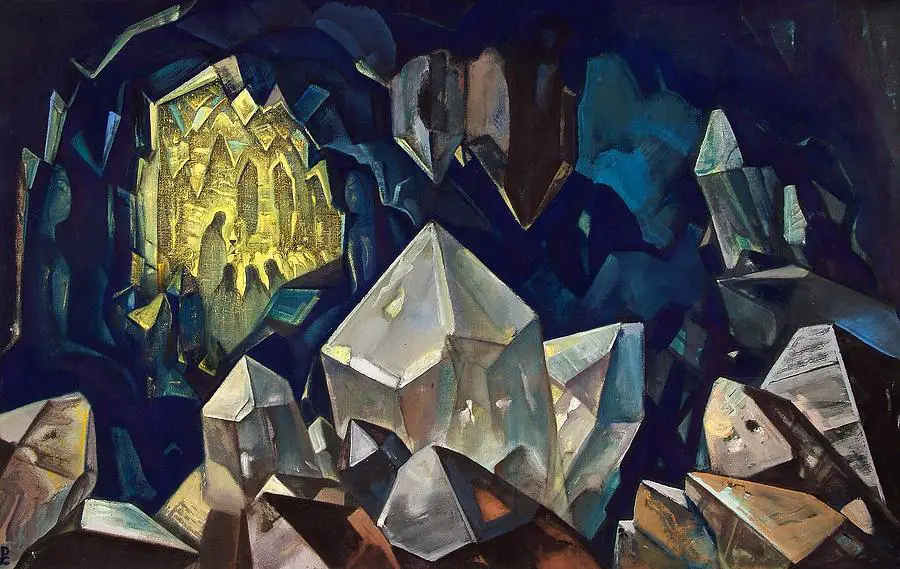
Underground caves and crystals
During the state of trance, the shaman lives the experience of being transported to 'other' places, which can be easily related to the realm of the 'little people' and even to the environments in which the abducted by aliens are led. Many shamanic accounts pass down the subject's experience of being transported, through a 'hole' or a sudden opening, into caves sometimes adorned with crystals and stalagmite formations and often illuminated by a strange diffused light without a visible source.
This environment is very often found in Shamanic accounts of Australian Aboriginal peoples, who describe the kingdom of Baiami, the creator god, as being made up of formations of quartz crystals (these minerals are central to the Australian animist tradition and during the initiations they are "sung" - or "projected" - inside the body of the neophyte). Before meeting the god, the Australian shaman tells of being dragged through some hollow tree trunks down underground, where he comes to an underground cave. Baiami is described as [6] 'An old man with a white beard and on his shoulders two huge quartz columns that towered in the sky. "
Let's now see an example concerning the North American shamanic tradition. Vinson Brown, a scholar of Native American culture, described in these terms a vision obtained under the guidance of Fools Crow, chief of ceremonies of the Oglala Sioux [7]:
“I sensed in the darkness the presence of a gigantic man beside me, a man of immense strength. He immediately bent over me and slipping his arms under his body and lifted me up like a twig. Then he took me about a hundred meters down the mountain until we came to the entrance of a cave. Inside this cave we walked another fifteen meters […] until we reached a room full of diffused light. "
Similar environments are also found in some testimonies of abductees, such as the Mexican photographer Carlos Diaz which, during an alien sighting in 1981 [8] 'He felt disoriented and suddenly noticed that the ship was standing inside one cave adorned with stalactites and stalagmites... "there was something strange about the way the cave was lit up ... the light was everywhere, but I couldn't figure out where it came from "».
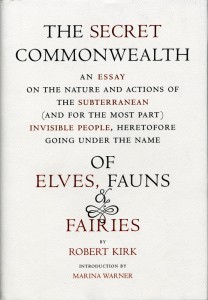
It is believed that the same Scottish Reverend Robert Kirk, author of the famous text The Secret Commonwealth, struck by apoplexy while walking at night near a 'fairy' hill, had been "kidnapped by the fairies in his second body or double, or that his soul, having left behind its own coarse and inert envelope, is clothed only in its intimate vehicle of airHad been transported instantly to fairy land [9]. Her parishioners and the people of Aberfoyle claimed that her body was never found and came to the conclusion that «the fairies, irritated by the revelation of their mysteries, had dragged him down, underground, to live in their underground city, pervaded by a green light, and there he will wait, prisoner of the fairy dream, until the last times, when all dreams will be dissipated» [10].
Heavenly journeys
Nonetheless, sometimes in literature based on encounters with the Fairies we find 'crystalline' environments which, rather than being underground, seem to be placed in the sky. In the story The crystal mountain, reported by the philologist VJ Propp in his best known work The historical roots of fairy tales and said [11]: “... and flew to the distant kingdom. But more than half of that kingdom had been absorbed by the crystal mount". In another it is said: «The diamond palace turns like a mill and from that palace you can see the whole universe, you can see all the kingdoms and countries as if on the palm of a hand».
Also in this case, the parallels are not lacking. In a big story North American tells of a young man who [12] “Approached a steep rock; she climbed to the top and threw herself off, but she wasn't hurt. She followed his path and soon saw one in front of her mountain sparkling with light. It was the Naolakoa rock, where one incessantly fell rock crystal rain. […] He soon realized that through rock crystal he had acquired the ability to fly. After that flew over the whole world».
As for the reports of the abduction, it seems superfluous to give examples of the very vast corpus of testimonies in which the abductees claim to have been transported to heaven and to have been able to see the globe from dizzying heights. What we want to underline is how similar testimonies have clear similarities with the accounts of some celestial shamanic journeys, such as that of the Winnibago shaman Thunder Cloud, which tells [13]: «Know how I learned to heal human beings. I was taken to an astral village of beings who live in heaven, a village of medical people where they educated me in this way ». Or that of Siberian shaman Nikolai Markov, which narrates [14]:
« Dancing, we began to ascend to the higher regions, at first as if we were taking off from the ground [...] It felt like flying. Soon I got to ninth oloch. Up until that moment I had flown in the dark; Now suddenly I found myself in a bright place like heaven. […] Dancing, we continued on our path. We flew for nine more oloch until we came to a immaculate and bright country. » [15]
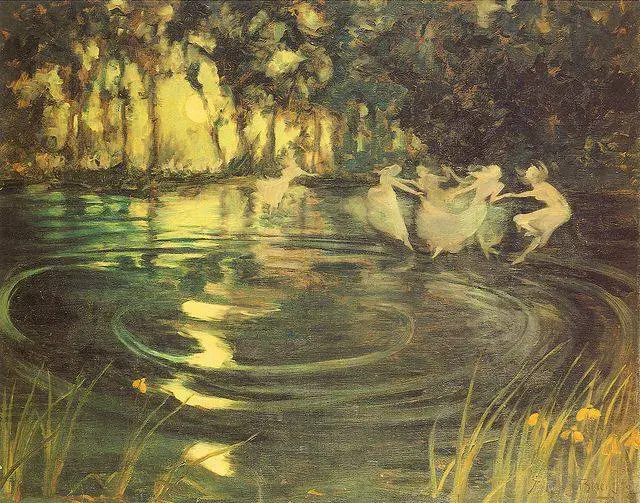
Scuba diving
In other cases — both in the shamanic tradition and in that of European folklore, and even modern ones abduction — the subject reaches the Other World through a underwater travel, sinking into the sea, a lake or a pond. Numerous shamanic traditions of Eurasia — including those of Tungusi, Chukchi and Lapps — speak of trance shamanic as of an "immersion". Among the Chukchis the drum is called a "boat" and a shaman in a trance is said to "dive" [16]. In an account of a shamanic session among the Yukaghiri, described by Jochelson and reported by Eliade, we read [17]:
«The shaman puts down the drum, lies face down on the reindeer skin and becomes immobile: this is the sign that he has left his body and that he is traveling in the afterlife. He descended into the Kingdom of Shadows "by means of his drum, as if he were immersed in a lake" » [18]
Here is some other information taken from Mircea Eliade's monograph on shamanism. Among the Tuanas Indians of the state of Washington [19] «an opening is made on the surface of the soil; the passage through a water course is imitated". Among the Nootkas, who attribute the "theft of the soul" to sea spirits, "the shaman plunges into ecstasy at the bottom of the ocean and returns wet". A large number of populations, including even The Inuit Eskimos, they situate the afterlife or the "Land of Shadows" in the depths of the sea [20]. Here is an account from the Arctic describing the 'descent' of the visiting shaman from Takànakapsâluk, the "Great Mother of marine animals" [21]:
«When he reaches the bottom of the ocean, the shaman finds himself in front of three large stones in continuous movement that block his way: he must pass between them, at the risk of being crushed. [...] Those who are really strong reach the bottom of the sea, near Takànakapsâluk, directly, diving under their tent or snow hut, like slipping into a tunnel »

The narrow passage to the "other world"
These testimonies allow us to notice how the passage between one dimension and another occurs most of the time through a sort of 'tunnel' or 'hole'. According to the Altaic shamanic tradition it is "the entrance to the other world", yer months ("The jaws of the Earth") or yer tunis ("The smoke hole of the Earth") [22]. The yakutis call "Spirit Hole" (abasy-oibono) the opening through which shamans can reach the underworld [23].
As in the reports of the Fairies, even in shamanic ones the entrance to the other world remains open only for a few moments, and then closes immediately. Among the Coriachi, for example, it is believed that [24] «the way of Hell begins directly under the funeral pyre and remains open only for the time necessary for the dead [or the shaman, ed.] you pass» [25]. Likewise, during the Australian shamanic journey, the visitor must cross «a passage that opened and closed continuously» [26]. Thus the great explorer of Greenland Knud Rasmussen he described a session of evocation of spirits among the Eskimos [27]:
“Then a piercing sound passes through the canopy of snow, and so everyone understands that a passage has opened for the soul of the spirit summoner. It is a circular hole, narrow like a seal's blowhole. Through this opening the soul of the spirit summoner flies into the sky, aided by all the stars that were once human and who go up and down through the hole to keep it open for the soul of the spirit summoner to pass through.. Some go up, some go down, and hissing echoes throughout the air. "
As for modern abductions, we can cite the experience of Filiberto Cardeanas, who in 1979 in Florida was kidnapped by "humanoids" who "took him to a beach, they opened a "lock" in the side of an immense rock and then carried it through an "underwater tunnel"» [28].
On this issue of the difficult passage for the other world that suddenly materializes and that opens and closes continuously the comparative research of Mircea eliade, which summarizes [29]:
« The major symbol to express the breaking of levels and the penetration into the "other world", in the supersensible world (be it the world of the dead or that of the gods), it is that of the “difficult passage”, the razor's edge [...] The "narrow door", the razor's edge, the narrow and dangerous bridge do not exhaust the richness of this symbolism [...] The hero of an initiatory tale must pass into point "where day and night meet", or find a door in a wall that appears compact, or go up to Heaven through a passage that is ajar for a single moment, pass between two constantly moving masses, between two boulders that collide continuously, or even between the jaws of a monster, etc. [...] As Coomaraswamy says, "Whoever wants to be transported from this world to another, or to return to it, must do so in the one-dimensional and atemporal interval that separates apparent but opposite forces, through which one can pass only in an instant" »
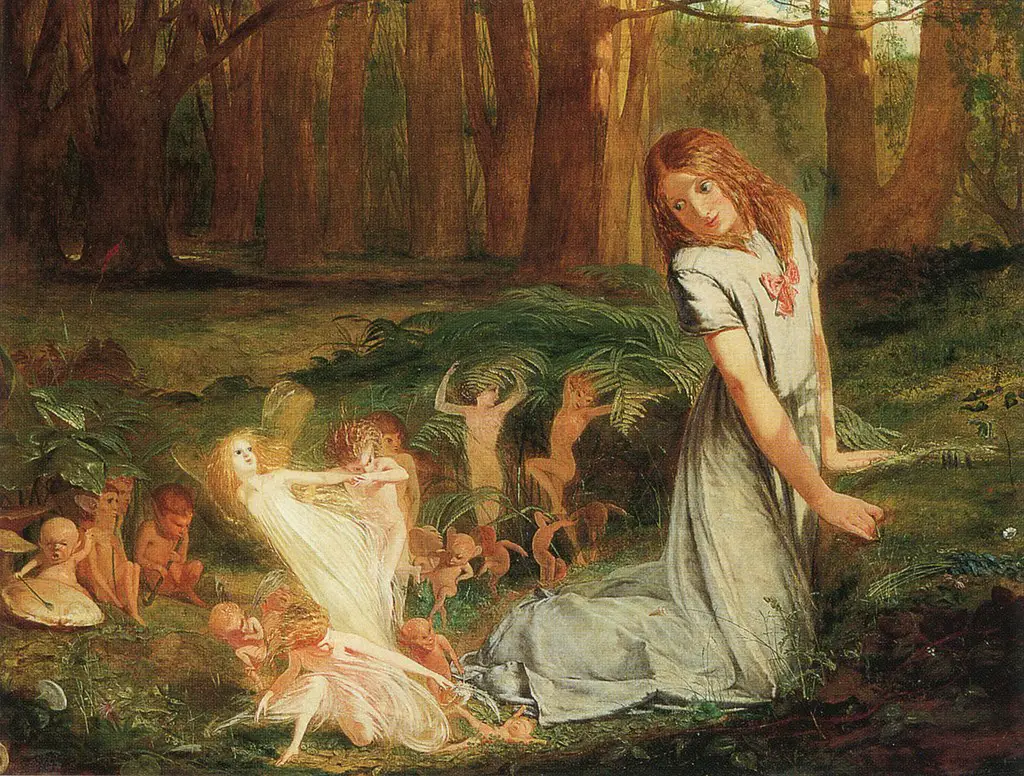
Fairy tales and the "hut"
Such enterprises moved from reports of shamanic experiences to fairy tales and ai fairy tales, in which the moment in which the hero / protagonist enters the Other World through a "narrow passage" constitutes the watershed of the narrative: from then on the reader is catapulted, with the protagonist, into the hidden world, which often, beyond to be the land of fairies, it is a "world of the dead". He talks about it among others Propp, who writes [30]:
«In a tale of dolgano fairies we read:“ At one point they (the shaman-geese) had to fly in the sky through an opening. An old woman sat next to this opening, and she kept an eye on the geese that flew past ”. This old woman is none other than the lady of the universe. “Nobody has to fly this way. She does not grant it the lady of the universe ”. "
How obvious, fairy tales of this kind are affected by an indisputably shamanic cultural substrate, also confirmed by the fact that only the dead can easily access the Other World: the living can do so only at their own risk, or by knowing the magic word.
In some fairy tales analyzed by Propp the entrance to the other world is described as a "Hut", located on an invisible border between one world and another, which revolves around its axis ("He keeps turning around ... he stands there and turns ...») And the protagonist, to access the other world, must pass through it. The problem is that this hut, from the side visible to the protagonist, has neither doors nor windows: access to the other dimension becomes possible only after having uttered a secret word or after having performed an exemplary action. Only in this way does the hut "turn around" and show the traveler the other side, the one through which it is possible to access the other world. Here is what the Russian scholar notes [31]:
"What is happening here? Why do you have to turn the hut over? Why can't you just enter it? Often […] there is a smooth wall, “without windows, without doors”, the entrance is on the opposite side. […] But why can't you go around the hut and enter from that other side? Obviously this cannot be done. Evidently the hut is located on a visible or invisible border that Ivàn absolutely cannot cross. […] The hut turns the open side towards the remote kingdom, the closed side towards the kingdom accessible to Ivàn. "
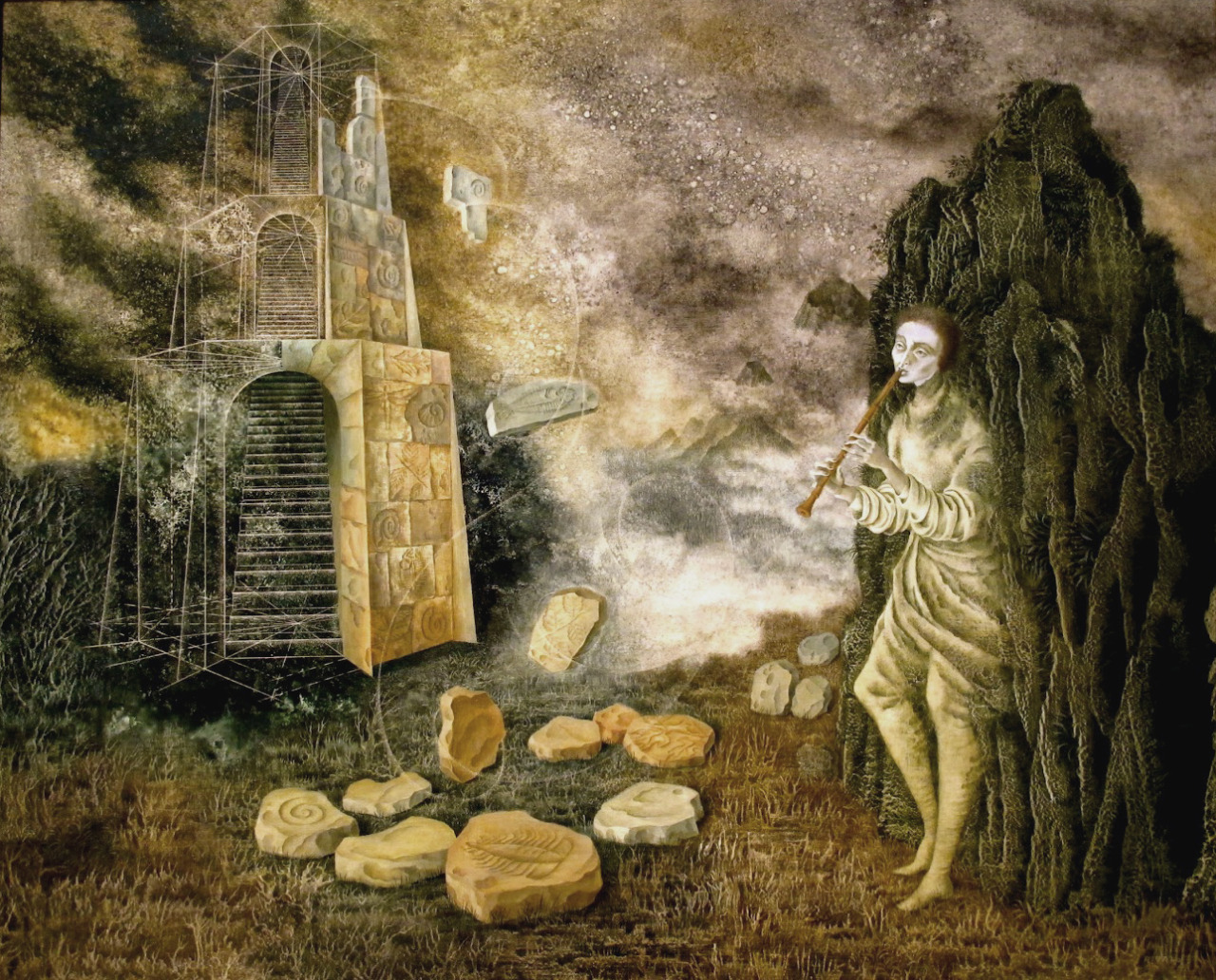
The case of the Pied Piper of Hamelin
At this point we have reported numerous examples of what can be defined as the «access forum to the Other World». Going further, we can perhaps include in this canvas as well the enigmatic medieval episode (1284) of the "Pied Piper of Hamelin", who, after having freed the village of Hamelin from plague-bearing rats thanks to the "magic music" of his flute (probably a variant of the "elven music" of European folklore), with the same weapon he subjugated the will of one hundred and thirty children and led them through a magical opening inside the Koppen Calvary in a "place of joy". Only a lame child was unable to enter the cavity which had temporarily opened and, returning to the village, told the incident to his fellow villagers. According to some, Calvary would be Mount Ith, only 15 km away from the town of Hameln, where it is located il Teufelsküche ("Devil's kitchen"), a place that in popular tradition was considered 'fairy'.
And, in this regard, at the end of this article, it seems significant to emphasize the fact that most of the modern and contemporary accounts concerning Fairies are based on experiences lived as children. Kirk notes [32]: "small children, not yet depraved by many objects, see apparitions that are not seen by those of an older age". It is as if, in the absence of a sacred technique (such as the shamanic one) to access this 'other' dimension, "pure in spirit" people are facilitated to live these involuntary experiences, and are therefore able to access the Other World on a par with men with "second sight" [33].
Note:
[1] See. The kidnappings of the Fairies: the "changeling" and the "renewal of the lineage".
[2] On abduction the American psychotherapist John Mack states: «To which field does the phenomenon of abduction? ... It perhaps refers to that class of phenomena, generally hated by Western scientific thought, that they do not seem to belong to the visible universe known to us, but which nevertheless seem to manifest themselves in it. These phenomena […] appear to us as an intersection between the realms of the spirit and the invisible and the material world, or an infringement of the radical division of one from the other»[Cit. in G. Hancock, Shamans, p. 325].
[3] See. The Friulian benandanti and the ancient European fertility cults.
[4] It is no coincidence in this regard, as Janet Bord points out [Fate, p. 149] that «witchcraft itself would have its origin in pre-Christian practices to promote fertility and in the cult of nature. […] Their circular rites are a clear imitation of the fairy circles, common to numerous sightings of the Little People ». On the other hand, in medieval accounts there was often no well-defined difference between witches and fairies: it could be said that the former differed from the latter solely for the fact of possessing a physical body, which the latter obviously did not present, being creatures. 'aerial' or 'ethereal'. It is interesting in this respect the Woman of fora, a figure of Sicilian folklore halfway between witch and fairy. According to the stories, the women of fora "They come out in spirit after being accepted into the procession of the Greater Fairy." Another similar figure is, in Piedmontese folklore, that of the Masca; cf. Fragments of a forgotten shamanism: the Piedmontese Masche.
[5] Holger Kalweit, Healers, shamans and sorcerers. Ubaldini, Rome, 1996, p. 127.
[6] Ibidem, p. 39.
[7] Cit. in idem, p. 98.
[8] Graham Hancock, Shamans. The masters of humanity. TEA, Milan, 2013, p. 332.
[9] Mario M. Rossi, The chaplain of the fairies. Appendix a Robert Kirk, The Secret Kingdom. Adelphi, Milan, 1993, p. 97, note 2.
[10] Robert Kirk, The Secret Kingdom. Adelphi, Milan, 1993, p. 32.
[11] Vladimir Yakovlevich Propp, The historical roots of fairy tales. Bollati Boringhieri, Turin, 2012, p. 448.
[12] Ibidem, p. 462.
[13] Kalweit, op. cit., p. 37.
[14] Ibidem, p. 43.
[15] But there is more. The reports that we have reported are not infrequently comparable to the cd. near-death experiences. Here, by way of example, is that of James H. Neal, which is particularly interesting when compared with that of the Siberian Markov [Kalweit, p. 169]: "I had the distinct sensation of being in the center of an explosion, from which emanated a brilliant, immense light. Immediately after this flash, it seemed to me that I was standing next to the wall of my room, looking with detachment at my body that I had left there on the bed. Then I crossed the wall, which obviously was not an obstacle to me. On the other hand, I found myself immersed in an immeasurably deep blue space, so much so that I marveled at having covered such an immense distance in such a short time. Then I came to another lighted place, only to realize that there was an even brighter passage leading out of there.».
[16] Mircea Eliade, Shamanism and the techniques of ecstasy. Mediterranee, Rome, 2005, p. 279.
[17] Ibidem, p. 272.
[18] Eliade notes that, having reached the bottom of the sea, the Altaic shaman [p. 226] "sees the bones of countless shamans who have fallen there, as sinners are unable to cross the bridge».
[19] Eliade, op. cit., p. 335.
[20] Ibidem, p. 259.
[21] Ibidem, p. 320.
[22] Ibidem, p. 226.
[23] Ibidem, p. 259.
[24] Ibidem, p. 276.
[25] Also according to Kirk [p. 45] the 'dimensional portal' to the Other World only remains open for an instant: "The vision does not last long because it only continues as long as they can keep the eye fixed without blinking».
[26] Kalweit, op. cit., p. 39.
[27] Cit. in idem, p. 121.
[28] Hancock, op. cit., p. 332.
[29] Mircea Eliade, Images and symbols. Jaca Book, Milan, 2015, pp. 77-78.
[30] Propp, op. cit., p. 96.
[31] Ibid, pp. 94-95.
[32] Kirk, op. cit., p. 52.
[33] Thus Kirk on "second sight" [p. 37]: "Those men we are talking about here perceive things that given their smallness and tenuousness and secret, are invisible to others even if they are close to them every day.". Similarly, Kalweit [p. 75] reports the belief of a important Pakistani: "This is how it is: normal people cannot see fairies. But who is it that sees them? First of all, the important; after him, the pashu, the seer. Between the people and the fairies there is a veil».
Bibliography:
- Janet Bord, You do. Chronicle of the royal encounters with the small people. Mondadori, Milan, 1999.
- Mircea Eliade, Images and symbols. Jaca Book, Milan, 2015.
- Mircea Eliade, Shamanism and the techniques of ecstasy. Mediterranee, Rome, 2005.
- David Halpin, Mysterious Worlds: Travels to the Faerie and Shamanic Realms, Ancient Origins.
- Graham Hancock, Shamans. The masters of humanity. TEA, Milan, 2013.
- Holger Kelweit, Healers, shamans and sorcerers. Ubaldini, Rome, 1996.
- Robert Kirk, The Secret Kingdom. Adelphi, Milan, 1993.
- Vladimir Yakovlevich Propp, The historical roots of fairy tales. Bollati Boringhieri, Turin, 2012.
- Mario M. Rossi, The chaplain of the fairies. Appendix a Robert Kirk, The Secret Kingdom. Adelphi, Milan, 1993.
- Neil Rushton, Altered States of Consciousness and the Faeries, Shamans, Faeries, Aliens and DMT, The Space-Time Continuum in Faerieland, DeadButDreaming.
- Jacques Vallee, Passport to Magonia. From folklore to flying saucers.

He posted it back up claudiadepompeis's Blog.
Very interesting article.
Thank you!